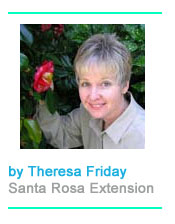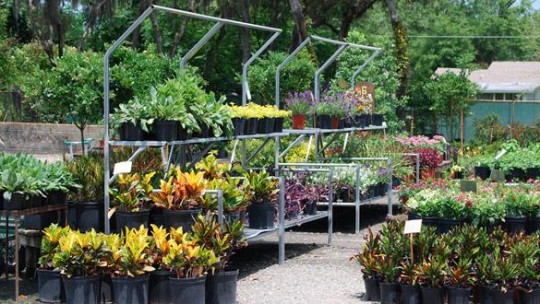Weekend Gardening: Fill Voids In Landscape With Shrubs
November 3, 2013
Occasionally gardeners will lose a shrub in their landscapes. This typically results in an unsightly void. Or perhaps you chose a beautiful shrub but put it in a location which it quickly outgrew. Fall is the best time of the year to plant new shrubs and transplant those that may need a new home.
 When planting new shrubs, take the time to choose plants that will meet your design requirement and will be the right size for your location. Trying to artificially manipulate a plant’s size or height by pruning should be avoided in the landscape, unless you are an expert at topiaries.
When planting new shrubs, take the time to choose plants that will meet your design requirement and will be the right size for your location. Trying to artificially manipulate a plant’s size or height by pruning should be avoided in the landscape, unless you are an expert at topiaries.
Another consideration when choosing shrubs is their leaf-retaining characteristics. Evergreen plants always have green leaves on the plant; however, they do drop foliage throughout the year. Deciduous plants drop all of their leaves at one time of the year, usually late fall.
Deciduous plants typically add beautiful floral displays to the landscape. Evergreen plants will provide the backbone of the design. The well-designed landscape will contain both deciduous and evergreen shrubs.
Northwest Florida gardeners can choose from a wide variety of beautiful shrubs. Some popular choices include azaleas, camellias, hydrangeas, cleyera, holly and gardenias. For more options and information, refer to a University of Florida publication titled “Selected Shrubs for North Florida.” It’s available online at http://edis.ifas.ufl.edu/mg344 or by calling your local Extension Office.
The best time to add new shrubs to the landscape is when we experience cooler weather, fall through early spring. To ensure success, be sure to follow proper procedures when planting the shrub. Correct planting and proper aftercare will prevent problems in the future.
 Begin by digging a hole at least twice as wide as and no deeper than the root ball. After digging, ensure that about one to two inches of the root ball is raised above the level of the surrounding soil. Remember the old saying, “Plant it high, it won’t die. Plant it low, it won’t grow.”
Begin by digging a hole at least twice as wide as and no deeper than the root ball. After digging, ensure that about one to two inches of the root ball is raised above the level of the surrounding soil. Remember the old saying, “Plant it high, it won’t die. Plant it low, it won’t grow.”
Probably one of the most overlooked steps is correcting root problems prior to planting. Shrubs that are planted with circling roots will always have circling roots and can abruptly fall over in high winds. Use your hands or a knife to loosen any roots that have been matted while growing in the container. Also, cut through any circling roots.
After you backfill the hole with the soil you removed, water-in the plant to release any air pockets. Mulch with three inches of organic mulch such as pine straw after planting is completed, but never on top of the root ball.
If you have decided to transplant a shrub, consider the following. Shrubs have better transplant tolerance than trees, deciduous plants better than evergreens, shallow rooted species better than deep rooted species, and younger plants better than older plants. Plants which are already in advanced stages of decline are likely to succumb to transplantation stress.
Dig as large a rootball as you can handle and follow the normal planting procedures. Aftercare is critical to a transplanted shrub’s survival, with proper watering perhaps the most important practice. Remember that sprinkler systems are not designed to establish trees and shrubs, so hand watering or a slow-drip system is recommended. Talk to your local Extension Agent for specific instructions.
You can have better success with planting or transplanting shrubs when you do it in the fall. Just be sure to follow established procedures and tend to the shrub for several months after planting.
Theresa Friday is the Residential Horticulture Extension Agent for Santa Rosa County.. Photo credit - David Marshall.



Comments